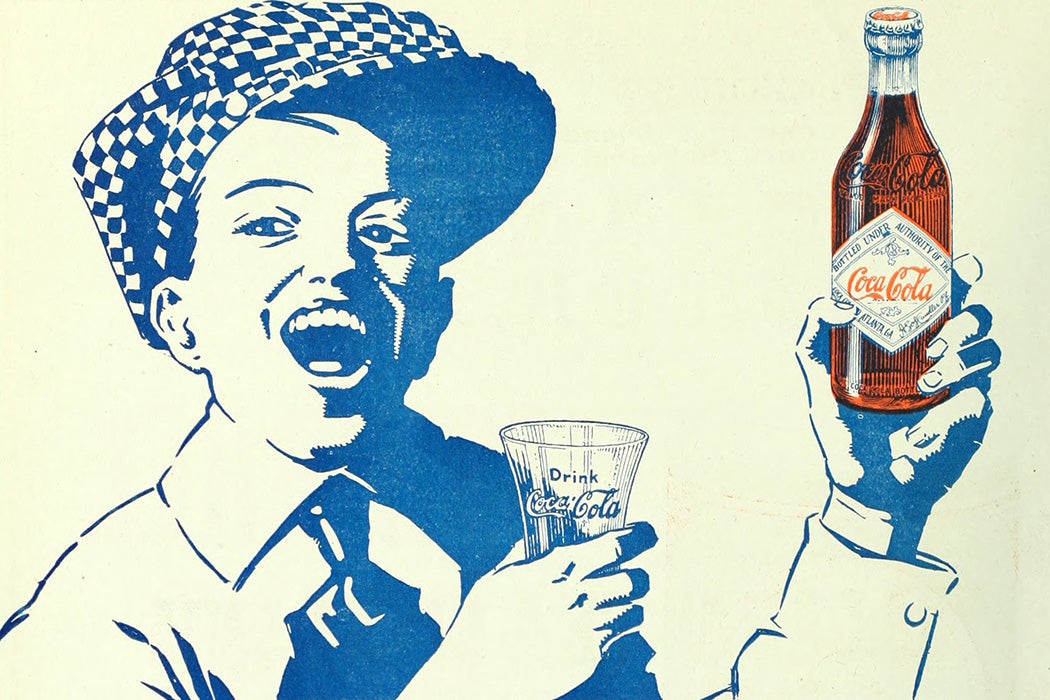A charismatic soda and the branding to match, Coca-Cola is more than just a beverage. Today, the Coca-Cola Company is one of the largest food and beverage corporations, reporting nearly $10 billion in profits in 2023. But, as historian Bartow J. Elmore argues in a 2013 article in Enterprise & Society, the company and its signature product’s rise to dominance from its relatively humble origins in 1886 in the hands of a broke Atlanta pharmacist was no coincidence. Instead, it resulted from a deliberately calculated plan to extract and acquire natural and social resources at minimum cost for maximum profit.
Elmore tracks how, in the early days of the company, Coca-Cola established key relationships in the supply chain ranging from public commodities to Monsanto to the Federal Bureau of Narcotics to drive down production costs. Ultimately, Elmore writes, Coca-Cola’s secret formula was a particular brand of capitalism based on the company’s “ability to embed itself in technological supply and distribution systems built, maintained, and financed by others.”
Though the recipe for Coke is famously proprietary, Elmore easily traces the environmental history of the company and beverage’s widespread success through a handful of well-known ingredients, such as water, sugar, caffeine, and coca. Elmore argues that Coca-Cola savvily siphoned resources from public and private entities to cheaply procure these key ingredients and establish a lean, mean global supply chain and market for their product.
Coca-Cola’s tactics began with an ingredient as fundamental as water, which we now experience as freely and widely available. But, in the early twentieth century in America, public commodities such as waterworks were just starting to emerge—and Coca-Cola seized the opportunity to prop up the systems through its franchised bottling model, and, conveniently offload upfront costs of bottling and shipping their “water-dense” product. Beginning in 1900, the company recruited local businessmen to rouse up $3,000 to establish regional franchises that would serve as regional bottling plants. Elmore recounts that many bottlers took out loans to start and consequently relied on the expanding public water systems to save on costs. This cost savings was then passed on to Coca-Cola, “broaden[ing] its bottling empire at low cost.” Indeed, Elmore notes that “as public water systems expanded into less-densely populated areas of the country by the 1910s, so too did Coke’s franchisees.”
Later in the twentieth century, Coca-Cola used a similar tack to expand business abroad. Elmore writes that the company secured foreign assistance loans by “argu[ing] that it could bring hydration to communities lacking basic water infrastructure” such as in the Middle East, Southeast Asia, and Africa through its earlier experience supporting American water infrastructure. Reviewing Freedom of Information Act (FOIA) records, though, Elmore found that “these projects often helped Coke sell bottled water and other products rather than encourage the development of large-scale public water works.”
Most iconically, Coca-Cola used coca leaf extract in their secret recipe—sourced early on from a partnership with the Federal Bureau of Narcotics. This, as Elmore puts it, “exposes yet another federal-corporate partnership that enabled Coke to purchase a key ingredient at low cost.” DEA-declassified documents in the National Archives show how Coca-Cola “secure[d] exclusive access to legal coca imports” after coca imports were criminalized in 1914. The FBN gave Coca-Cola “special exemptions” that allowed the company to purchase decocainized coca leaf extract, while denying exemptions for the same ingredient to other buyers.
“By restricting buyer access to coca leaves,” Elmore writes, “the federal government helped to create a monopsony for Coca-Cola,” ensuring they were the only buyers for the “exotic ingredient” and forever linking the substance with the brand.
Elmore outlines how Coca-Cola established similar low-cost and low-commitment relationships to source ingredients like caffeine—initially from agricultural giant Monsanto, then from decaf coffee maker General Foods—or to abdicate social responsibility, such as the endless plastic and aluminum waste their products generate. More broadly, the story of Coca-Cola told from a natural resources perspective demonstrates how, like consumer goods and agriculture, food and beverage production at scale was and is an extractive enterprise with substantial social and environmental impact.
For Elmore, with its emergence at the turn of the twentieth century, Coca-Cola heralds “a new type of corporation that emerged in the Gilded Age,” with few fixed assets but extraordinary market reach. Indeed, a product like Coca-Cola—and many of our processed foods today—“gained life by finding a way to market the excesses of mass-producing industrial firms,” Elmore writes, further distancing consumer habits from their resource-intensive origins.
Three Tips for Teaching
Cooking with Coke. Discuss the spread of the soft drink in the culinary world. Bring your favorite recipe to class!
Explore the global history of Coca-Cola’s ingredients. Elmore points out the ingredient label highlights six major drink components: water, sugar, caffeine, coca leaves (and other “natural flavors”), packaging, and high-fructose corn syrup.
Support JSTOR Daily! Join our membership program on Patreon today.







